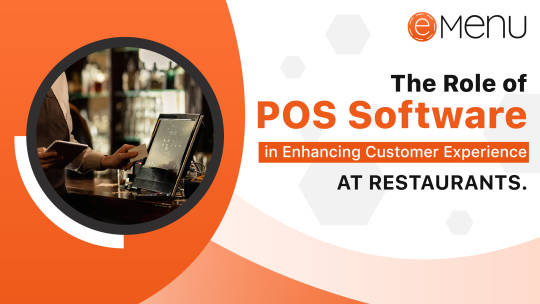#restaurant pos systems
Explore tagged Tumblr posts
Text
Restaurant POS Systems: Streamline Operations & Enhance Dining Experiences
Explore top restaurant POS systems designed to simplify operations, manage orders, track inventory, and deliver exceptional customer service. Boost efficiency and profitability today!
0 notes
Text
0 notes
Text
Suntoyo Singapore - Retail POS System vs. Restaurant POS System in Singapore
Selecting the appropriate Point of Sale (POS) system holds great importance for many businesses. Whether overseeing a retail store or a busy restaurant, the POS system chosen can greatly influence productivity, customer satisfaction, and financial performance. However, for various industries in Singapore to succeed in POS implementation, differentiating between retail POS systems and restaurant POS systems is necessary.
Discover the details of these two systems and determine which solution best suits your business requirements.

1. Functionality and Features
Retail POS Systems: These systems, designed primarily for retail operations, prioritise inventory management, sales tracking, and customer relationship management (CRM). In Singapore, where retail businesses flourish, a robust POS system is essential for managing diverse product lines, tracking stock levels accurately, and facilitating seamless transactions.
Restaurant POS Systems: On the other hand, restaurant POS systems are tailored to meet the unique demands of the food service industry. These systems typically include table management, menu customisation, split-check capabilities, and kitchen display systems (KDS) integration. In Singapore's vibrant culinary scene, where restaurants cater to diverse palates, an efficient POS system can streamline order processing and enhance overall dining experiences.
2. User Interface and Ease of Use
Retail POS Systems: Given the varied nature of retail transactions, simplicity and intuitive design are essential for retail POS systems. Employees must navigate the system swiftly to process sales, look up product information, and manage customer data efficiently. In Singapore, where retail staff turnover rates can be high, a user-friendly POS interface is essential for minimising training time and maximising productivity.
Restaurant POS Systems: In contrast, restaurant POS systems must accommodate the intricacies of table service, order modifications, and quick turnaround times. The interface should be optimised for fast-paced environments, allowing servers to input orders accurately and communicate seamlessly with kitchen staff. With Singaporeans' penchant for dining out, especially in bustling food hubs like Chinatown and Kampong Glam, a restaurant POS system must facilitate smooth operations to meet customer expectations.

3. Integration and Scalability
Retail POS Systems: For retail businesses in Singapore, seamless integration with other software solutions is essential for holistic business management. Whether it's integrating with accounting software for financial reporting or e-commerce platforms for omnichannel sales, a retail POS system should offer scalability and adaptability to accommodate evolving business needs.
Restaurant POS Systems: Similarly, restaurant POS systems should offer integration with reservation systems, online ordering platforms, and loyalty programs to enhance customer engagement and operational efficiency. In a city-state like Singapore, where food delivery services thrive and diners seek convenience, a restaurant POS system's ability to integrate with third-party platforms is vital for staying competitive.
4. Reporting and Analytics
Retail POS Systems: Retail businesses rely on data-driven insights to optimise inventory management, identify sales trends, and personalise marketing strategies. A robust reporting and analytics feature in a retail POS system can provide valuable metrics on product performance, customer demographics, and sales forecasts, empowering businesses to make informed decisions and drive profitability.
Restaurant POS Systems: Likewise, restaurant operators leverage data analytics to analyse menu performance, track dining preferences, and optimise pricing strategies. In Singapore's diverse culinary landscape, where diners are discerning and culinary trends evolve rapidly, a restaurant POS system's analytics capabilities can provide valuable insights for menu development, marketing campaigns, and operational improvements.
Conclusion
Both retail POS systems and restaurant POS systems play crucial roles in business operations, yet they vary in terms of functionalities, user interfaces, integration capabilities, and reporting features. Retail establishments in Singapore typically need a POS system focusing on inventory management, whereas restaurants seek a solution tailored for table service and order management. By recognising the distinctions between these two types of POS systems, companies can make well-informed choices to boost productivity, improve customer satisfaction, and attain long-term success in Singapore's competitive business environment.Visit Suntoyo to take the next step towards business efficiency and growth with reliable POS systems.
0 notes
Text
Restaurant Point of Sales: Revolutionizing the Dining Experience
The restaurant industry is continuously evolving, driven by the demand for greater efficiency, improved customer service, and seamless operations. At the heart of this transformation is the Restaurant Point of Sale (POS) system, a technology that has revolutionized how restaurants operate, manage transactions, and interact with customers. In 2024, the capabilities and benefits of POS systems are more advanced and impactful than ever before.
Enhanced Operational Efficiency
One of the primary advantages of modern Restaurant POS systems is their ability to streamline operations. These systems integrate various functions such as order taking, payment processing, inventory management, and customer relationship management into a single platform. This integration reduces the time and effort required to manage these tasks separately, allowing restaurant staff to focus more on delivering excellent customer service.
For instance, with a POS system, orders can be directly entered into a digital interface and sent immediately to the kitchen. This minimizes the chances of errors that often occur with manual order taking and ensures that the kitchen staff receives orders promptly and accurately. Additionally, POS systems can track inventory in real-time, alerting managers when stock levels are low and helping to prevent shortages or overstock situations.
Improved Customer Experience
In 2024, customer expectations are higher than ever. Patrons demand fast, accurate, and personalized service, and Restaurant POS systems are key to meeting these expectations. By using data analytics, POS systems can provide insights into customer preferences and ordering habits. This information allows restaurants to tailor their offerings and promotions to individual customers, enhancing their dining experience.
Moreover, POS systems facilitate faster and more efficient payment processing. Whether customers prefer to pay with cash, credit card, or mobile payment apps, modern POS systems can handle multiple payment methods with ease. Some systems even support contactless payments, which have become increasingly popular due to their convenience and speed.
Advanced Data Analytics and Reporting
The ability to analyze and interpret data is crucial for any business, and restaurants are no exception. Restaurant POS systems generate a wealth of data that can be used to gain insights into sales trends, peak business hours, popular menu items, and more. These insights can inform decision-making and strategic planning, helping restaurant owners optimize their operations and increase profitability.
#Restaurant Point of Sales#Restaurant POS systems#POS systems#(POS) system#Data Analytics and Reporting#inventory management#payment processing
0 notes
Text
Restaurant POS System
A Restaurant POS system, vital for hospitality, caters to restaurants, cafes, bars, and food service providers. Intended for owners, managers, and staff, it manages day-to-day operations, including order processing, payment handling, and customer service.
0 notes
Text
Empowering Small Businesses with Cloud-Based Restaurant POS Systems
Unlock the potential of seamless operations with Overseepos! Our 'Cloud-Based Restaurant POS Systems' are revolutionizing small businesses, providing flexibility and efficiency. Say goodbye to traditional hassles and embrace innovation with Overseepos. Elevate your restaurant's performance and join the future of hassle-free operations.
0 notes
Text
#Restaurants POS Systems#restaurant pos system#restaurant management system#best restaurant pos system#pos system for restaurants#restaurant pos#pos system#square for restaurants#restaurant software#best pos system for restaurant#best restaurant pos#restaurant#best pos system#point of sale system#pos systems for restaurants#restaurant pos systems#pos restaurant system#restaurant management#top pos systems for restaurants#best restaurant pos systems#pos system restaurant
1 note
·
View note
Text

Restaurant POS Systems with Orderific - Streamline Your Ordering Process
Discover the benefits of using Orderific with our restaurant POS systems. Simplify your ordering process, manage inventory, and increase efficiency with our intuitive and user-friendly software. Try Orderific today and take your restaurant to the next level.
#restaurant pos systems#hotel management software#bar management software#hospitality management software#coffee shop pos system
0 notes
Text
Restaurant POS Systems for Online & In-House Orders
A restaurant POS system is an electronic cash register that manages the receipt and payment of customers at a restaurant. It is a vital piece of equipment for any restaurant owner, especially if you have a lot of guests. The system also gives you the convenience of being able to see who's coming and going and what they're ordering, so you can optimize your staff time and resources.

You can get a POS system that's integrated with a tablet app for mobile ordering, which eliminates the need for using a smartphone or ordering via a website. However, this is an expensive option, and it also requires additional setup for your restaurant, so it's best to start with a POS system that has a touchscreen.
In general, it's always good to buy a POS system with a built-in credit card reader, so you don't have to worry about remembering or carrying extra cards. It can also help you manage your inventory better and automate the bill-paying process.
There are many restaurant POS systems out there, so it's important to know what you need before you make a purchase.
0 notes
Link
Master holiday food waste management with 6 smart strategies. Use PAYS POS for demand forecasting, portion control, and sustainable operations.
#smartpossystem#restaurant pos system#point of sale system#restaurant pos#food waste management#restaurant management#cafe pos system
3 notes
·
View notes
Text
Top Restaurant POS Systems 2024 | Streamline Operations & Boost Service
Find the best restaurant POS systems for 2024. Optimize your operations, manage orders efficiently, and enhance customer service with advanced point-of-sale solutions tailored for the restaurant industry.
0 notes
Text
Taking Stock: The Essentials of Restaurant Inventory Management Software

In the realm of gastronomy, where patrons demand nothing less than top-tier cuisine and impeccable service, restaurant proprietors and administrators face the arduous task of maintaining a well-stocked kitchen, minimizing wastefulness, and effectively managing expenditures. This is precisely where the realm of restaurant inventory management software comes into play. In this extensive discourse, we embark on a profound exploration of the fundamentals surrounding restaurant inventory management software, accentuating its merits, pivotal attributes, and the transformative potential it harbors for restaurant operations.
What Constitutes Restaurant Inventory Management Software?
Restaurant inventory management software stands as a formidable tool meticulously engineered to empower restaurant proprietors and supervisors in their relentless pursuit of methodically overseeing, tracking, and mastering their inventory infrastructure. It proffers a digital remedy to the timeless quandaries tied to the meticulous surveillance of ingredients, provisions, and equipment. This software forms the bedrock of a meticulously organized culinary haven, perpetually ensuring the harmonious rhythm of all operations.
The Merits of Adhering to Inventory Management Software
Meticulous Expenditure Oversight
Amongst the most noteworthy advantages attributed to restaurant inventory management software is its capacity to exercise judicious expenditure control. Through precise monitoring of inventory levels and the vigilant observation of consumption patterns, avenues for curbing extravagance and trimming expenses are unveiled. The ramifications of this could be profound, bearing the potential to elevate profitability to unprecedented heights.
Augmented Precision
Manual inventory management bears the inherent vulnerability of yielding inaccuracies, a potential source of stock-related discrepancies. The advent of inventory management software dispels this risk through the mechanization of the entire process. It endows you with real-time data, perpetually ensuring the pristine precision of your inventory records.
Amplified Efficiency
Efficiency is the quintessential cornerstone upon which any prosperous restaurant establishment is erected. Inventory management software expedites the ordering procedures by triggering alerts when inventory dwindles perilously low. This precludes the peril of overstocking or the harrowing scenario of crucial ingredients vanishing from your inventory, safeguarding the seamless operation of your kitchen.
The Pivotal Attributes of Restaurant Inventory Management Software
To surge past competitors within the fiercely competitive restaurant landscape, a keen comprehension of the cardinal attributes rendering inventory management software indispensable is imperative:
Inventory Surveillance - At its core, inventory management software is the sentinel of your inventory realm. It furnishes you with the means to vigilantly monitor the quantity and utilization of each constituent in real time. A mere glance suffices to discern which items teeter on the precipice of depletion, necessitating prompt replenishment.
Astute Supplier Management - Effective supplier management assumes a pivotal role in the flourishing of any dining establishment. Inventory management software empowers you to maintain meticulous records of your suppliers, encompassing their contact details and pricing specifics. Some advanced iterations even facilitate the automation of reordering contingent on predetermined criteria.
Integration with Culinary Repertoire - Seamless integration with your restaurant's menu constitutes a game-changing facet. It ensures that you perpetually possess the necessary ingredients to conjure each culinary masterpiece. Additionally, it provides insights into the most financially rewarding items on your menu.
The Prudent Selection of Restaurant Inventory Management Software
The task of selecting the apt software solution for your dining establishment is a decision of paramount importance, one that warrants meticulous deliberation. Here are some sagacious pointers to steer you toward an informed decision:
Discern Your Precise Requisites
Before embarking on your quest, undertake a comprehensive assessment of your restaurant's unique requirements. Contemplate factors such as the scale of your establishment, the intricacies of your culinary repertoire, and your fiscal constraints. Such self-awareness will function as the compass guiding you through your selection process.
2. Embrace a User-Friendly Interface
Opt for software that boasts an intuitive interface. Your staff should be able to acclimate themselves to it effortlessly, sans the need for extensive training endeavors. A user-friendly interface will not only conserve time but also stave off the specter of inadvertent errors.
3. Seamless Integration Capabilities
In instances where you are already availing yourself of other restaurant management software solutions, ascertain that your inventory system possesses the seamless integration capability essential for harmonious coexistence. Integration simplifies your operational workflow and obviates the redundancy of effort.
In Denouement
Inventory management with point of sale restaurant software appears as a hidden catalyst with the potential to propel your dining establishment to previously undiscovered levels of excellence. It is an important asset for any restaurateur or manager because of its ability to control expenses, improve precision, increase productivity, and provide invaluable data insights. You gain a competitive advantage in the frenetic world of gastronomy by meticulously handpicking software that matches your specific needs.
#inventory management#restaurant inventory management software#restaurant management software#restaurant point of sale#full service restaurant#kitchen display system#restaurant kds#online ordering system#restaurant pos system#self service kiosk
2 notes
·
View notes
Text
The Role of POS Software in Enhancing Customer Experience at Restaurants.

In the ever-evolving world of restaurants, providing an exceptional customer experience is crucial for success. From delectable cuisine to warm hospitality, every aspect counts. One significant factor that often goes unnoticed is the role of Point of Sale (POS) software in enhancing the overall customer experience. In this blog post, we will explore how POS software has revolutionized the restaurant industry and why it is indispensable for creating a seamless and satisfying dining experience.
Streamlined Ordering Process:
POS Software has revolutionized the way orders are taken and processed in restaurants. Gone are the days of manual order-taking, which often led to errors and delays. With the introduction of POS systems, servers can now quickly and accurately take orders directly at the table, transmitting them instantly to the kitchen. This streamlined process minimizes the chances of mistakes and ensures prompt service, allowing customers to enjoy their meals without unnecessary waiting times.
Personalized Service:
Another crucial aspect of enhancing the customer experience is personalization. OnlineEMenu POS Software enables restaurants to store detailed customer information, including preferences, dietary restrictions, and previous orders. With this data readily available, staff can provide a personalized dining experience tailored to individual tastes. From suggesting favorite dishes to accommodating special requests, the ability to remember customer preferences enhances customer satisfaction and fosters loyalty. OnlineEMenu POS Systems also facilitate effective customer relationship management by allowing targeted marketing campaigns and loyalty programs based on customer data.
Efficient Payment Options:
The payment process can often be a bottleneck in a restaurant's operations, leading to frustration for both customers and staff. POS software offers efficient payment options that simplify transactions, saving time and effort. Modern POS systems support various payment methods, including credit cards, mobile payments, and even cryptocurrencies. By offering a wide range of payment options, restaurants cater to customers' preferences and create a seamless payment experience. Additionally, integrated POS systems can split bills, apply discounts, and manage gratuities automatically, ensuring accuracy and eliminating the need for manual calculations.
Real-Time Inventory Management:
POS software goes beyond just facilitating transactions; it also plays a vital role in Inventory Management System. By keeping track of ingredient quantities and real-time sales data, restaurants can optimize their inventory levels and avoid stockouts or wastage. Efficient inventory management leads to smoother operations, ensuring that customers are not disappointed by unavailable menu items. Moreover, POS systems can generate automatic alerts when certain items reach low stock levels, enabling proactive ordering and maintaining a consistent dining experience.
Insightful Reporting and Analytics:
POS software offers valuable reporting and analytics capabilities, providing restaurant owners and managers with crucial insights into their business performance. Detailed reports on sales, customer preferences, peak hours, and more enable data-driven decision-making. These insights allow restaurants to identify trends, evaluate the success of menu items, and adjust pricing strategies accordingly. By leveraging the power of data, restaurants can continually enhance the customer experience, addressing any shortcomings and meeting evolving demands.
Conclusion:
In today's competitive restaurant industry, delivering an exceptional customer experience is essential for success. POS software has emerged as a game-changer, revolutionizing the way restaurants operate. From streamlined ordering and personalized service to efficient payments and insightful analytics, POS Systems empower restaurants to provide a seamless and satisfying dining experience. Embracing the power of technology through POS software not only enhances customer satisfaction but also improves operational efficiency, leading to increased profitability. As restaurants continue to adapt to changing consumer expectations, POS software remains an indispensable tool for delivering exceptional dining experiences.
youtube
#restaurant management software#restaurant pos system#restaurant management system#pos billing software#pos system#pos software#restaurant pos software#point of sale system#point of sale (pos) system#OnlineEMenu#point of sale#restaurant software#restaurant#restaurant billing software#restaurant point of sale#restaurant sales#restaurant ordering system#restaurant business#Youtube
5 notes
·
View notes
Text
How to Run a Restaurant Business Successfully in India: Essential Tips and Strategies
A thorough understanding of the Indian food sector, effective administration, and careful planning are all necessary for operating a successful restaurant. With the ever-increasing competition and evolving customer preferences, restaurant owners must stay ahead of the game to thrive in this dynamic market. In this article, we will explore essential tips and strategies for running a restaurant business successfully in India, with a particular focus on leveraging restaurant system management and software for efficient operations.
Embrace Technology: Restaurant Point of Sale (POS) Systems-
One of the most crucial aspects of running a successful restaurant business is adopting modern technology to streamline operations. A robust restaurant Point of sales system is an invaluable tool that can revolutionize your restaurant's efficiency and profitability. A restaurant POS system automates various tasks such as order management, inventory tracking, billing, and reporting.
Investing in reliable software for restaurant POS in India can enhance the overall dining experience for your customers. With a feature-rich POS system, you can expedite order processing, reduce errors, and improve table turnover. Furthermore, advanced POS software allows you to manage multiple aspects of your restaurant, including online orders, delivery, and reservations.
Optimize Restaurant System Management
Efficient management of your restaurant system is crucial for smooth day-to-day operations. Here are some essential tips to consider:
a) Staff Training: Invest in comprehensive training programs to ensure your staff is well-equipped to handle various responsibilities. Properly trained employees can provide better customer service, handle busy periods efficiently, and effectively utilize the restaurant POS system.
b) Inventory Management: Implement a robust inventory management system to track ingredients, supplies, and equipment. Regularly monitor stock levels, streamline procurement processes, and reduce wastage to minimize costs.
c) Menu Engineering: Analyze your menu and identify the most popular dishes, as well as the least profitable ones. Optimize your menu by highlighting high-margin items and removing underperforming dishes. This strategic approach can significantly impact your revenue and customer satisfaction.
d) Streamline Operations: Look for areas where you can automate or streamline operations further. This could include implementing self-service kiosks for order placement, online reservation systems, or integrating your POS system with third-party delivery platforms.
Focus on Customer Experience
In the highly competitive restaurant industry, providing an exceptional customer experience is paramount. Happy customers become loyal patrons and often spread positive word-of-mouth, which is invaluable for your business. Here are some tips to enhance the customer experience:
a) Personalized Service: Train your staff to provide personalized attention to customers. Encourage them to engage in friendly conversations, remember regular customers' preferences, and offer recommendations based on individual tastes.
b) Speed and Efficiency: With the help of a restaurant POS system, streamline your order management process to ensure quick and accurate service. Reduce waiting times, expedite food preparation, and optimize the billing process to leave a lasting positive impression.
c) Online Presence: Leverage the power of digital platforms to connect with your customers. Maintain an informative and user-friendly website, regularly update your social media accounts, and actively engage with customer reviews and feedback.
d) Loyalty Programs: Implement a customer loyalty program to incentivize repeat visits. Offer discounts, freebies, or exclusive benefits to encourage customers to choose your restaurant over competitors.
Maintain Quality and Consistency
Consistency is key to building a strong brand reputation and earning customer loyalty. To maintain high-quality standards:
a) Ingredients and Sourcing: Source fresh and high-quality ingredients from reliable suppliers. Ensure your kitchen staff follows strict guidelines for food preparation and storage.
b) Menu Testing: Regularly evaluate and test new dishes or menu updates to maintain consistency in taste, presentation, and portion sizes.
c) Hygiene and Cleanliness: Ensure that your restaurant maintains impeccable hygiene standards. Regularly clean and sanitize all areas, including the dining area, kitchen, restrooms, and storage spaces. Train your staff on proper food handling and safety practices to prevent any health hazards.
d) Feedback and Improvement: Encourage customer feedback and take it seriously. Address any concerns or complaints promptly and take necessary measures to rectify them. Use feedback as an opportunity for continuous improvement and to meet and exceed customer expectations.
Effective Marketing and Promotion
Implementing effective marketing and promotional strategies can help increase your restaurant's visibility and attract new customers. Consider the following tips:
a) Online Presence: Develop a strong online presence through a well-designed website, active social media profiles, and online review platforms. Regularly update your online platforms with enticing content, attractive food photography, and engaging promotions.
b) Local Partnerships: Collaborate with local influencers, food bloggers, and organizations to reach a wider audience. Offer special deals or partnerships to enhance visibility and credibility.
c) Special Events and Offers: Organize special events, themed nights, or seasonal promotions to create excitement and attract customers. Offer discounts, happy hour specials, or loyalty program incentives to entice new and repeat visitors.
d) Customer Referrals: Implement a referral program that rewards customers for bringing in new patrons. Word-of-mouth referrals can be highly effective in attracting new business.
Financial Management and Cost Control
To run a successful restaurant business, effective financial management is crucial. Consider these tips for better cost control:
a) Budgeting: Develop a comprehensive budget that includes all aspects of your restaurant's expenses, including food costs, staff salaries, rent, utilities, and marketing. Regularly review and analyze your budget to identify areas where costs can be reduced without compromising quality.
b) Menu Pricing: Set prices strategically by considering ingredient costs, competition, and customer perception. Ensure that your menu pricing allows for a healthy profit margin without alienating customers.
c) Vendor Negotiations: Build strong relationships with your suppliers and negotiate favorable terms to secure competitive pricing for ingredients and supplies. Regularly compare prices from different vendors to ensure you're getting the best deals.
d) Waste Reduction: Implement measures to minimize food waste and optimize portion sizes. Train your staff on portion control techniques and consider donating excess food to local charities or food banks.
Conclusion Running a successful restaurant business in India requires a combination of effective management strategies, embracing technology, providing exceptional customer experiences, and implementing smart marketing techniques. By utilizing restaurant system management and leveraging pos restaurant software in India, you can streamline operations, enhance efficiency, and improve overall profitability. Additionally, focusing on customer satisfaction, maintaining quality standards, and controlling costs are essential elements of a thriving restaurant business. With dedication, continuous improvement, and the implementation of these essential tips and strategies, you can position your restaurant for success in the dynamic Indian food industry.

2 notes
·
View notes
Text
What is a Restaurant POS Systems?
Restaurant POS systems streamline order and payment processing by interacting with various systems in the hospitality industry. They includes user-friendly interfaces, essential hardware components, and can manage table assignments, reservations, and menus while optimizing inventory.
0 notes
Text











we are website development company wagzus.com, we are offering free website,logo,letter head, business card, broucher, marketing seo on just ordering of our product https://www.fiverr.com/s/QvoXoe in 5$.
#point of sale system#website design#website development#website developers#pos system#pos software#pos solutions#restaurant pos system#retail pos system#logo design#graphic design#leaflet#wordpress#wordpress themes#custom wordpress development#shopify#ecommerce#woocommerce#youtube thumbnail
5 notes
·
View notes